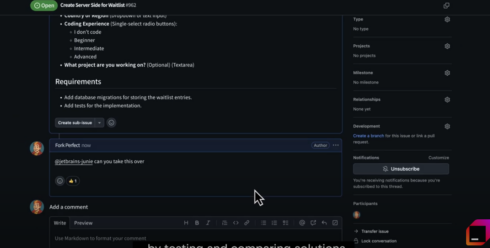
JetBrains announces updates to its coding agent Junie
Junie is now fully integrated into GitHub, enabling asynchronous development with features such as the ability to delegate multiple tasks simultaneously, the ability to make quick fixes without opening the IDE, team collaboration directly in GitHub, and seamless switching between the IDE and GitHub. Junie on GitHub is currently in an early access program and only supports JVM and PHP.
JetBrains also added support for MCP to enable Junie to connect to external sources. Other new features include 30% faster task completion speed and support for remote development on macOS and Linux.
Gemini API gets first embedding model
These types of models generate embeddings for words, phrases, sentences, and code, to provide context-aware results that are more accurate than keyword-based approaches. “They efficiently retrieve relevant information from knowledge bases, represented by embeddings, which are then passed as additional context in the input prompt to language models, guiding it to generate more informed and accurate responses,” the Gemini docs say.
The embedding model in the Gemini API supports over 100 languages and a 2048 input token length. It will be offered via both free and paid tiers to enable developers to experiment with it for free and then scale up as needed.
Amazon adds new capabilities to SageMaker
Users can now launch Amazon QuickSight from within SageMaker Unified Studio to build dashboards using project data and share them to the Amazon SageMaker Catalog for discovery across their organization.
In addition, support was added for Amazon S3 general purpose buckets to enable users to find and collaborate on data and S3 Access Grants to ensure fine-grained access control. Users can now onboard AWS Glue Data Catalog datasets into SageMaker catalog as well.
“These new SageMaker capabilities address the complete data lifecycle within a unified and governed experience. You get automatic onboarding of existing structured data from your lakehouse, seamless cataloging of unstructured data content in Amazon S3, and streamlined visualization through QuickSight—all with consistent governance and access controls,” AWS wrote in a blog post.






